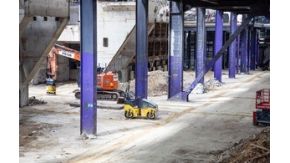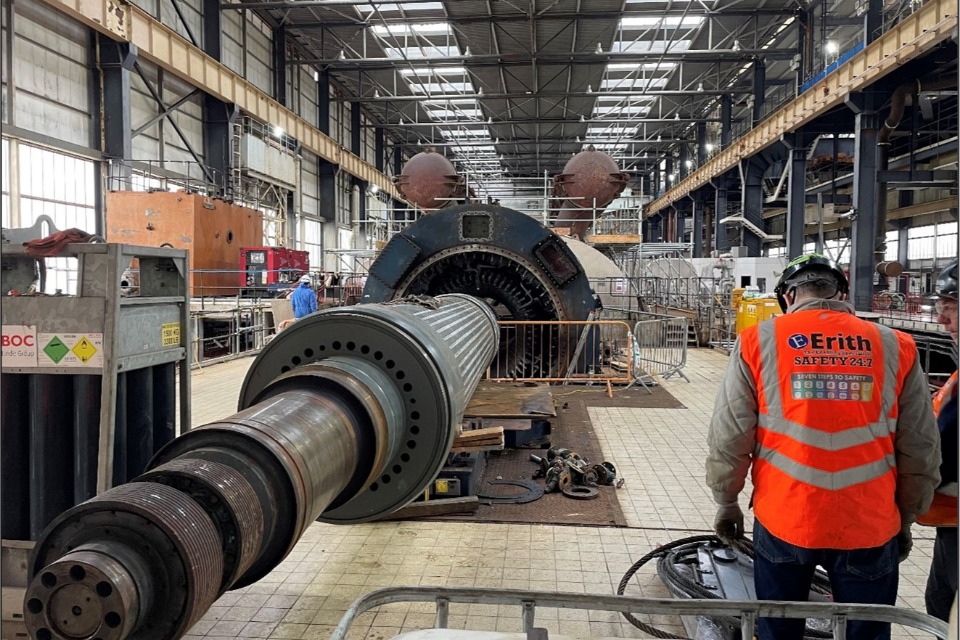
Major demolition project approved for Sizewell A
Nuclear Restoration Services (NRS) has been given planning consent to demolish the turbine hall and electrical annexe at Sizewell A site.
Sizewell A site director, Alan Walker, commented: “This is fantastic news. I’d like to thank everyone involved in helping to deliver our mission to decommission Sizewell A site safely, securely and sustainably.
“The work brings benefits to the local economy and makes a considerable contribution towards achieving strategic NRS targets to reduce ageing buildings to ground level and remove redundant material.”

Sizewell A deplant team
Alan Cumming, Nuclear Decommissioning Authority, group chief assurance and performance officer, said: “We are committed to decommissioning our sites safely, securely and sustainably – freeing up land which can then be reused to deliver benefits for the local community.
“Demolition of the turbine hall will be a tangible step forward in delivering our mission and I want to thank all those involved for their hard work in getting us to the stage and the incredible progress that has been made to far.”
Wendy Heath, senior project manager explains: “This is one of the largest programmes of work Sizewell A has seen for many years. It will result in a major skyline change for the community and clear an area the size of a professional football pitch for future use by March 2025.

Sizewell A seperating the 54 tonne rotor from Turbine Alternator 1
“We began removing all the redundant equipment from the turbine hall last year and expect to complete this in August ready for the demolition stage. Over 5,500 tonnes of metal has been safely taken out – that’s more than the weight of two Blackpool towers! The waste has been recycled on the metals market and is expected to generate an income of between £3 – £4.5 million.”
Supply chain partner Erith started work as the principal contractor in July 2022. Their highly skilled team have applied all the learning from previous NRS turbine hall demolitions to get to this point.
Ashley Notman, Erith project manager, said: “We’ve carried out extensive enabling works to get ready for the demolition to start in August. These include removing scaffolding and hazardous materials and de-planting major items of mechanical/electrical generating plant and equipment.
“We worked closely with NRS and the Office of Nuclear Regulation to provide the justification to allow the use of targeted specialist explosive demolition to weaken the large concrete plinths the turbines stood on. This assists the overall programme of works by reducing the duration of traditional mechanical demolition methods by about 40% and noise pollution.”
How did we get here?
- 25,000 work hours to clean all areas of asbestos to ensure a safe working environment.
- 45,000 work hours to remove 8,000 scaffolding boards, clips and pipes.
- 2,498 tonnes of metal removed and recycled from the two turbines in 2023/4.
- 35.6 miles of cabling removed – that’s further than the distance between Sizewell and Great Yarmouth.
The twin reactors were shut down on 31 December 2006 after 40 years of low carbon electricity generation. The noise and vibrations in the turbine hall gradually fell silent as the two turbines and huge machinery wound down for the last time.

Sizewell A turbine hall May 2022
News by Category
- BECBC
- Cumbria
- Nuclear
- Social Value
- Professional Services
- Clean Energy
- Business
- People
- Government
- BECBC Member News
